Cash flow, the total amount of money moving in and out of your business, affects how much cash you have. If cash is moving out faster than its moving in, you may run short of cash and may have to raise funds through borrowing, sale of assets, or raising equity.
For many businesses in Ghana, raising adequate funding is difficult. Loans are hard to get and very expensive. Equity is even harder to raise, and therefore generating adequate cash flow from their business is the surest way of having enough cash to operate.
If you sell on credit, you’ll have Accounts Receivable or debtors. If you manage your Accounts Receivable, it can improve your cash flow. Unmanaged, Accounts Receivable can hurt your cash flow.
What can you do to manage cash flow with Accounts Receivable? Here are some suggestions.
Know Your Customer
It is important to assess your customers’ ability to pay their debts on time. You must do this for both new and existing customers.
There are many ways to do this. For new customers you can review their financial statements and ask for a credit reference. For an existing customer, you can review their payment record – do they pay on time? Do they seem to struggle to pay?
Don’t rush to sell on credit. Try to assess your customers’ credit worthiness, especially if the order is large. A large sale to a bad customer can badly affect your cash flow.
Clear and Accurate Invoices
So as not to give your customers reasons to delay payment[i]:
- Agree payment terms with the customer – payment terms set out terms such as when payment is due and discounts for early payment.
- Ensure that your invoices are comprehensive and itemized.
- Send you invoices as soon as you finish the work – the customer can pay your invoice only when he gets it. When you delay in sending your invoices, you delay payment.
Monitor Your Receivables
You must monitor the your receivables so you can act on invoices not paid on their due date. To help you monitor receivables you can:
- Set alerts to notify your customers that payment is due.
- Review aging reports – aging reports classify outstanding debts based on how long they are past their due dates. It is a quick way to identify overdue receivables.
Make Payment Easy
Give the customer options for payment and let him choose the one that is convenient. Some options you can deploy are:
- Electronic funds transfer – provide details of your bank account on your invoices.
- Mobile money – provide details of your mobile money account on the invoice.
- Cheque or cash.
Collection
When the customer does not pay, you must take action to collect as early as possible. The action you take can range from reminders to legal action. It is important that you manage your effort to collect in a way that does not alienate the customer.
Use Technology
You need accurate records to manage your Accounts Receivable. Technology makes managing Accounts Receivable efficient.
Accounting software such as Xero, a cloud accounting tool, gives you features such as
- Invoicing
- Mechanisms to set alerts and reminders
- Automated record keeping – helps you maintain accurate Accounts Receivable records.
- Accounts receivable reports – various reports on Accounts Receivable.
Technology gives you an efficient means to manage your Accounts Receivable.
Take Away
You can release cash to run your business by carefully managing Accounts Receivable. Use the techniques in this article to help you generate cash faster from Accounts Receivable.
Outsourcing your invoice management to an accountant can be an efficient way to manage your receivables. To explore how SCG can assist you to manage your invoices or your accounts, Contact us at in**@sc*.gh or or visit our website for Accounting Services.
For more blogs and information please follow us on Facebook, Twitter, Youtube and LinkedIn.

